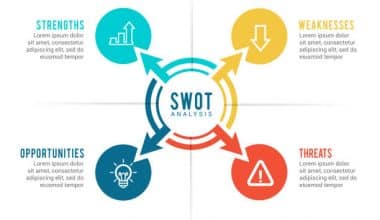Job seekers have an advantage when applying for jobs due to the present labor shortage and low unemployment rate. But it doesn’t mean you don’t require a resume that has been produced by a professional. For every available position, employers still want to locate and hire the best candidates, and resumes are the first step in that process. There are a number of techniques you may employ to make your resume stand out and highlight your qualifications for the position. Read on to learn how to resume writing and the various resume writing services.
Resume Writing
One document frequently used in the employment process is a résumé. It contains details about your past and qualifications and ought to present the most crucial, pertinent details about you to potential employers in a simple, easy-to-read format. The objective is to succinctly explain how your talents and experiences make you uniquely qualified for the job.
You may adhere to a few straightforward guidelines and industry best practices to make a resume that employers will take notice of. The essential thing to remember is to make your resume readable and relevant. Let’s take a closer look at how each of these parts of a resume should be written.
The Importance of a Resume
The most vital item you’ll submit during your job search is your resume. It’s your first chance to introduce yourself to a potential employer, so you could say it’s your frontline fighter. Making the most of every second is crucial because hiring managers and recruiters only spend six to seven seconds on each CV. A great CV can make you stand out from the competition, while a weak one can eliminate you from consideration.
How to Resume Writing
When creating a resume for your next job application, take the following actions:
#1. Select the Appropriate Resume Format to Begin With
The “format” of your resume is the way and order in which you put information on it. You can select one of three popular resume templates based on which is best for you: functional, chronological (or reverse-chronological), or a combination of both.
- If you have a strong professional employment record with no gaps in employment, a chronological resume structure, which puts the professional history section first, is a suitable choice.
- If you are changing industries or have any gaps in your employment history, the functional resume structure, which puts emphasis on the skills section, is a smart choice.
- Lastly, if you have any professional experience, the combination resume style is a fantastic choice because it gives equal weight to your job history and talents.
#2. Provide Your Name and Phone Number
Your name and contact details, such as your phone number and email address, should be at the top of your resume. Whether or not to mention your mailing address is entirely up to you. At the top of your resume, your name should stand out by being bold or bigger than the rest of the text, but it shouldn’t be any bigger than 14 points. If you’re applying for creative jobs, for instance, you might also add a link to your online portfolio.
#3. Include a Resume Objective or Summary
You have the choice of following your contact information with an objective statement or a resume summary. For people with little professional experience, such as recent college or high school grads, an objective statement is an excellent choice as it succinctly describes your career aspirations. A resume summary is a succinct statement that describes your pertinent work experience and talents in the present tense.
#4. Describe Your Hard and Soft Skills
Think about the abilities that make you the best candidate for the position. Examine the job description and mark any keywords that you have previously used successfully. When shifting occupations or industries, take into account your transferrable talents as well as both hard (technical) and soft (interpersonal) skills. Create a “talents” section using employer-relevant keywords. Include any necessary credentials, such as licenses or certificates, upfront.
#5. List Your Career Highlights With Keywords
Your career history should be written in reverse chronological order. Start with your most recent position and give a brief summary of it. Include the name of the company, how long you worked there, what your job title was, and a few of the most important things you did while you were there.
#6. Include a Section on Education
If you are switching to a new field or have little work experience (such as recent college or high school graduates), an education section would be extremely helpful. You must list the institution’s name, the dates you attended, and your degree or field of study in your education section. In this section, you can also list any certificates or licenses you have that are important to the job description.
#7. Think About Including Optional Parts
If your CV is largely blank, think about adding an accomplishments or interests section. This could be a good addition to a short CV, especially for people with little work or school experience. Make sure the accomplishments and hobbies you present are pertinent to prospective employers and support your professional objectives.
#8. Prepare your Resume
In addition to things like font type, font size, margins, and space, your resume’s layout is also very important. Your resume can be set up in a way that makes it look neat and professional and makes it easier to read. This is crucial if you want to keep an employer’s interest.
#9. Review Your Resume for Errors
Check your resume thoroughly for spelling, grammatical, and punctuation mistakes. You can find mistakes in your resume by reading it backward. This is because the words are in a different order. Additionally, you ought to get a resume evaluation from dependable friends, acquaintances, teachers, and members of your family. Getting second opinions can help you discover fresh details you may have missed.
#10. Generate a Unique Résumé for Each Opportunity
Your resume needs to be kept up-to-date so that you can tailor it to each job you apply for. Make sure that the keywords in the “talents” section are changed for each job to make sure that they fit the requirements perfectly. Depending on what the job description states, you should also change what you highlight in the work history and education sections.
Resume Writing Services
You arrived here after having trouble getting an interview. So, stop worrying. Simply choose one of our top resume writing services, and with a CV so good, no one will ever dare to reject you. The resume writing services include:
#1. TopResume
This resume writing services takes place where the person who writes resumes and CVs for academics and the government pays close attention to resume keywords. That’s not all, though. A professional writer can flick you right once they see that you share interests with them, such as the same industry and level of experience. Then you decide on a revision date, and your resume is ready just seven days later. If you send them your current resume, they can look it over carefully for free, giving you a chance to see how much they know.
#2. The Muse
This is one of the resume writing services created for you if the statement “you may be just as great, but you haven’t inquired how” didn’t make you gag. This specific resume evaluation service has a unique offer for you. Instead of having you write the entire thing, mentors and coaches conduct a Skype or phone session to walk you through all the nuances of resume writing. Additionally, you get to pick who you wish to schedule a session with. There may be three or more pages about the opinions of different professionals.
#3. ResumeGo
This is only one of the resume writing services that provide you with a preview of their work. They provide various examples of how they have rebranded, revised, and restructured the resumes of their clients. Additionally, you can explore their studies on job search tactics, generic cover letters, and resume layout. You know from everything mentioned above that you will be working with professionals, which they are. You can come across career counselors, HR consultants, and recruiters from various industries while looking for a resume writer.
#4. ResumeSpice
The fact that a Harvard MBA and a group of experienced recruiters founded this particular resume writing service makes it appear legitimate and free of hidden fees. Due to the clear page navigation, you can easily find what you’re looking for. Additionally, based on years of expertise, the names of the plans even indicate which one you should select. The samples that ResumeSpice offers are unquestionably of high caliber, which further establishes their credibility. They know what they’re doing, as evidenced.
#5. ResumeWriters.com
Resume writers in North America pride themselves on customizing their services for different life situations. They have every right to do so. They have plans for academic CVs as well as resumes for former military personnel. You don’t need to worry if you’re switching careers from teaching to marketing because ResumeWriters.com can help you with your resume.
In addition to starting from scratch, you are welcome to work on your previously created resume while being supervised by experienced resume writers. Now that you are aware, you can stop worrying about the strength of your application.
#6. ZipJob
This is one of the best resume writing services out there: Trader Joe’s. Let’s say you don’t like the finished item. In such a scenario, you have 60 days to return and have a professional resume writer revise it. How kind of you!
The writing business provides ATS resume-building services. This means that they are making a product that can be used with any recruiting software. The file format, layout, and keywords on the resume will all be right for the software. Furthermore, even the premium package is less expensive than those of its rivals.
What Are the 7 Steps to Writing a Resume?
Always keep in mind that an employer is searching for a person who can perform the job well. You must be able to show this, but to accomplish this properly, you frequently need to tailor your resume (CV) and cover letter for each job you apply for. The ideal resume is brief, effective, and expert. The following seven steps will help you create the ideal resume:
#1. Decide on a Format
Choosing the correct format is the first step in creating the ideal resume. At this point, templates and online resume-building tools can be useful. Look through resume samples and examples to determine which format will work best for your career. Simple and less difficult to read is the optimum format. It must have a straightforward typeface, succinct headings, and bulleted lists. You may utilize a format that contains an objective overview, a list of core competencies, or links to your online profile by your level of expertise and your sector.
#2. Commence With Your Contact Details
When a hiring manager looks at your resume, the first thing they should see is your contact information. At the start of the document, you should include your full name, email address, phone number, city, and state. A header or centered text box frequently contains contact information.
#3. Add a Profile of Your Career
The professional profile is listed underneath your contact information. Your professional identity is briefly summarized in this section. Your current job title, academic credentials, key talents, and links to online resumes or professional accounts on social media can all be included. A hiring manager should be able to rapidly determine who you are and why you are qualified for the position by looking at your professional portfolio.
#4. Provide a Summary of Your Training and Experience
Your resume’s body is made up of several crucial sections that highlight your qualifications. The first of these usually consist of two to three sentences about your educational background. The names of the institutions you have attended as well as the names of your exact major and degree should be listed in this area. You might mention your GPA and other academic honors if appropriate.
The section that describes your professional experience should come next. This comprises a rundown of your prior employment, your duties, and your achievements. The best approach for a work history section is to break down each job entry into a series of bullet points that list the years you held each position and the accomplishments you made while filling it.
#5. Emphasize your Abilities
The summary of your professional skills and experience is in the next section. Hard and soft skills both need to be part of this. All of the talents you list should be relevant to the position you’re looking for. Use the words and phrases from the original job description in your CV so that the automated system can read it. You can also quickly describe how you picked up particular abilities and how you used them to help your past companies, if applicable.
#6. Mention your Credentials
Include documentation of your credentials or certificates on your resume if the position you are looking for requires it. The full title of the certification, the name of the organization that bestowed it, and the date you obtained it should all be included in your entries. You can still list a certification if you are still working toward it by adding the words “in progress” at the end of the entry’s title.
#7. Conclude With Additional Sections
You might need to add more pertinent parts to the conclusion of your resume depending on the sector or field you work in. Volunteer work, professional recognition, and personal hobbies are a few examples. Only include additional sections if they are pertinent to the position you are applying for. When in doubt, choose simplicity to ensure that everything you include in your resume is pertinent and appropriate.
What Is the Difference between a CV & Resume?
The Latin word curriculum vitae (CV) means “course of life.” Resumé, on the other hand, is French for “summary.” CVs and resumes both:
- are customized for the particular position/business you are applying for
- should demonstrate that you are the most qualified applicant.
- utilized to land you a job interview
- typically avoid mentioning personal interests
You must create both a resume and a CV if you are applying for academic and industry (commercial or public sector) positions.
Curriculum Vitae vs. Resume: Format and Content
The CV is a comprehensive history of your academic accomplishments, hence its length varies. Contrarily, a resume gives a succinct overview of your abilities and experience for a particular position, so its length is typically shorter and determined by years of experience (generally 1-2 pages).
People who are applying for fellowships, grants, postdoctoral positions, teaching and research positions in higher education, or high-level research positions in industry, use CVs. Applications for graduate school often ask for a CV, but in general, they’re looking for a resume that lists all of your publications and summaries of your research projects.
The term “CV” is frequently used in Europe to refer to all job application materials, including resumes. The terms “CV” and “resume” are occasionally used synonymously in the United States and Canada. It is best to get clarification if you are unsure of the type of paper to submit.
Resume
- Focus on skills
- Use it when applying for private, public, and nonprofit jobs.
- Use at most two pages long, with a third page for publications or poster presentations if they are particularly pertinent to the position.
- Place the education section at the end or close to it after one year of industry experience, depending on your qualifications.
CV
- Highlights academic achievements
- Utilized while submitting applications for academic posts, fellowships, and grants
- Length varies according to expertise and contains a comprehensive list of papers, posters, and presentations
- Always starts with education and can include the advisor’s name, the subject of the dissertation, or a summary (see examples). Additionally used for sabbatical leave and merit/tenure reviews.
What is Best Resume Format?
The reverse-chronological resume format is the ideal choice for the majority of job seekers. In reverse chronological sequence, that is, starting with the most recent position and moving backwards through earlier positions or degrees, you would describe your education and work experience.
Can I Use My CV as a Resume?
The term “CV” is frequently used in Europe to refer to all job application materials, including resumes. The terms “CV” and “resume” are occasionally used synonymously in the United States and Canada.
Do Employers Prefer CV or Resume?
A resume is ideal when applying for most jobs in the United States. Simply provide a cause for the potential employer to interview you. A CV may be required instead of a resume when applying for jobs in the academic, research, scientific, and medical industries.
Do I Need Both a CV and a Resume?
You must create both a resume and a CV if you are applying for academic and industry (commercial or public sector) positions.
References
- icc.ucdavis.edu
- indeed.com
- zety.com
Related Articles
- HOW TO MAKE A GOOD RESUME: Tips on Writing an Effective Resume
- HOW TO LIST SKILLS ON A RESUME: Best 2023 Practices (+ Free Tips)
- BEGINNER SKILLS FOR RESUME: 15 Top Skills, Tips & All You Need !!!
- 53+ Hard Skills And How To Highlight Them On A Resume
- Top 33+ Resume Action Words To Make Your Resume Irresistible






